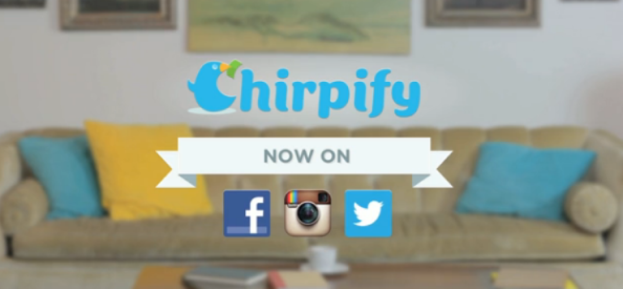 Social commerce start-up Chirpify has been bringing payments to social networks for about a year now. Originally, the payment system was only available to Twitter, later adding Instagram, and most recently Facebook to the its mix.
Social commerce start-up Chirpify has been bringing payments to social networks for about a year now. Originally, the payment system was only available to Twitter, later adding Instagram, and most recently Facebook to the its mix.
The idea? To enable payments between friends, brands, and artists (so … just about anyone) with nothing more than a tweet, Instagram hashtagged comment, or Facebook reply. Once you’re signed into Chirpify’s system and connect your bank account, you’re set up to pay back friends via Twitter, or buy one of the start-up’s partnered artist’s new albums on Facebook.
It’s becoming an increasingly versatile platform, moving beyond its former Twitter-only status and its largely artist seller-base. And now, it’s taking an even bigger move and shirking its PayPal restrictions. Until now, you’ve had to hook up your account to Chirpify via PayPal – now, you have to option to sign up directly with Chirpify, cutting out the middle man altogether.
“What we hear time and time again from our users – from brands, artists, users on Etsy – we hear that they don’t want to bother with PayPal,” says founder Chris Teso. “They don’t want to pay the PayPal fee on top of the Chirpify fee, so we’ll effectively eliminate one fee … and we’ll also eliminate the need for a third party in the platform.”
“There’s always that concern that your business models will cross streams. But we bring a lot of value to these social platforms right now.”
Teso says that while Chirpify will still allow people to use PayPal if they prefer, they won’t be held up by what he says has been a “sales blocker” for the system – now, if you’re getting paid via Chirpify, that money will go directly to your account, no need to transfer it out of PayPal.
All major credit and debit cards, international and domestic credit cards are now accepted, and you can also hook your banking account up directly to Chirpify.
Chirpify, with a banking partner, built out the platform itself. “On the engineering side it’s been a decent endeavor,” Teso says, also noting that ample time was spent building relationships with the banking industry.
“We’re unleashed, we feel,” he says. “Now it’s about adoption and traction and bringing on new brands.” He explains that now that the platform is robust, and scalable – and built out on its own – a user push is coming.
Any nervousness about building off of social platforms? “We’re partnering with them but we’re also building off their platforms,” Teso says. “There’s always that concern that your business models will cross streams. But we bring a lot of value to these social platforms right now, because we’re bringing brands to the table, increasing engagement rates – tweets get more activity, Facebook posts are being shared because they’re actionable.”
He also explains that there’s impetus for brands to use Chirpify over a hypothetical native system: You get access to multiple platform payments versus a singular, proprietary one – and for users, being able to move network to network without changing applications is a benefit as well.
Cutting itself loose of PayPal restrictions makes Chirpify feel a lot more like Venmo, or other third party wallet solutions. Up until this point, the PayPal tie kept it just beyond convenience – it was still a novel and interesting tool, and seeing artists selling their new albums via Twitter or Facebook and buying them there was certainly an intriguing new concept. But peer to peer commerce felt out of reach … because being forced into and out of PayPal in order to use this social option was one step too many.
But Chirpify has effectively taken that step out back and killed it and simplified its system. Now, we just have to wait and watch where they go next: Tumblr? LinkedIn? Google+ …? Teso says Chirpify plans to expand to other social platforms as well, but won’t offer details on those specifics quite yet.


